Wikipedia
Generative design is an iterative design process that involves a program that will generate a certain number of outputs that meet certain constraints, and a designer that will fine tune the feasible region by changing minimal and maximal values of an interval in which a variable of the program meets the set of constraints, in order to reduce or augment the number of outputs to choose from. The program doesn’t need to be run on a machine like a digital computer, it can be run by a human for example with pen and paper. The designer doesn’t need to be a human, it can be a test program in a testing environment or an artificial intelligence, for example a generative adversarial network. The designer learns to refine the program (usually involving algorithms) with each iteration as his design goals become better defined over time.
Wikipedia
The terms design computing and other relevant terms including design and computation and computational design refer to the study and practice of design activities through the application and development of novel ideas and techniques in computing. One of the early groups to coin this term was the Key Centre of Design Computing and Cognition at the University of Sydney in Australia, which for nearly fifty years (late 1960s to today) pioneered the research, teaching, and consulting of design and computational technologies. This group organised the academic conference series "Artificial Intelligence in Design (AID)"[1] published by Springer during that period. AID was later renamed "Design Computing and Cognition (DCC)"[2] and is currently a leading biannual conference in the field. Other notable groups in this area are the Design and Computation[3] group at Massachusetts Institute of Technology's School of Architecture + Planning and the Computational Design[4] group at Georgia Tech.
Wikipedia
Procedural modeling is an umbrella term for a number of techniques in computer graphics to create 3D models and textures from sets of rules. L-Systems, fractals, and generative modeling are procedural modeling techniques since they apply algorithms for producing scenes. The set of rules may either be embedded into the algorithm, configurable by parameters, or the set of rules is separate from the evaluation engine. The output is called procedural content, which can be used in computer games, films, be uploaded to the internet, or the user may edit the content manually. Procedural models often exhibit database amplification, meaning that large scenes can be generated from a much smaller amount of rules. If the employed algorithm produces the same output every time, the output need not be stored. Often, it suffices to start the algorithm with the same random seed to achieve this.
Although all modeling techniques on a computer require algorithms to manage and store data at some point, procedural modeling focuses on creating a model from a rule set, rather than editing the model via user input. Procedural modeling is often applied when it would be too cumbersome to create a 3D model using generic 3D modelers, or when more specialized tools are required. This is often the case for plants, architecture or landscapes.
Wikipedia
Shape grammars in computation are a specific class of production systems that generate geometric shapes. Typically, shapes are 2- or 3-dimensional, thus shape grammars are a way to study 2- and 3-dimensional languages. The foundation of shape grammars has been defined in a seminal article by George Stiny and James Gips in 1971.
Liang Sicheng: Qing Structural Regulations
Qing Structural Regulations (清式营造则例) is a monograph on Qing dynasty architecture by the Chinese architect Liang Sicheng, first published in 1934.
Liang based his research of Qing dynasty architecture on the 1734 Qing dynasty Architecture Method (Qing Gongcheng Zuofa Zeli 清工程做法则例) of the Qianlong era. He also consulted several craftsmen's manuscripts which had been handed down from generation to generation, and he sought guidance with the palace restoration craftsmen in Beijing. The Forbidden City was the subject of an intense object of study, which he documented with modern drawings and a large number of photographs taken by himself and by his wife. In the end, Liang deciphered a large amount of obscure jargon, making it intelligible to students of architecture, and clarifying the structural characteristics of ancient Chinese architecture.
Since its publication, for more than seven decades, it has become the principal textbook on the essence of ancient Chinese architecture. As Liang put it, this book and Yingzao Fashi are the "two grammar books of Chinese architecture".

Foguangsi Front view

Foguangsi Side view

Dulesi Side view

Jiuzhoubaita Front view

Biyunsi Front view

Evolution of Chinese order

Evolution of Shuatou(head of the beam)

Evolution of LanE and PuBaiFang(Architecture and Plate)
Wangnan: Guijufangyuan

Uomo vitruviano, Leonardo da Vinci

Yingzao Fashi,李誡
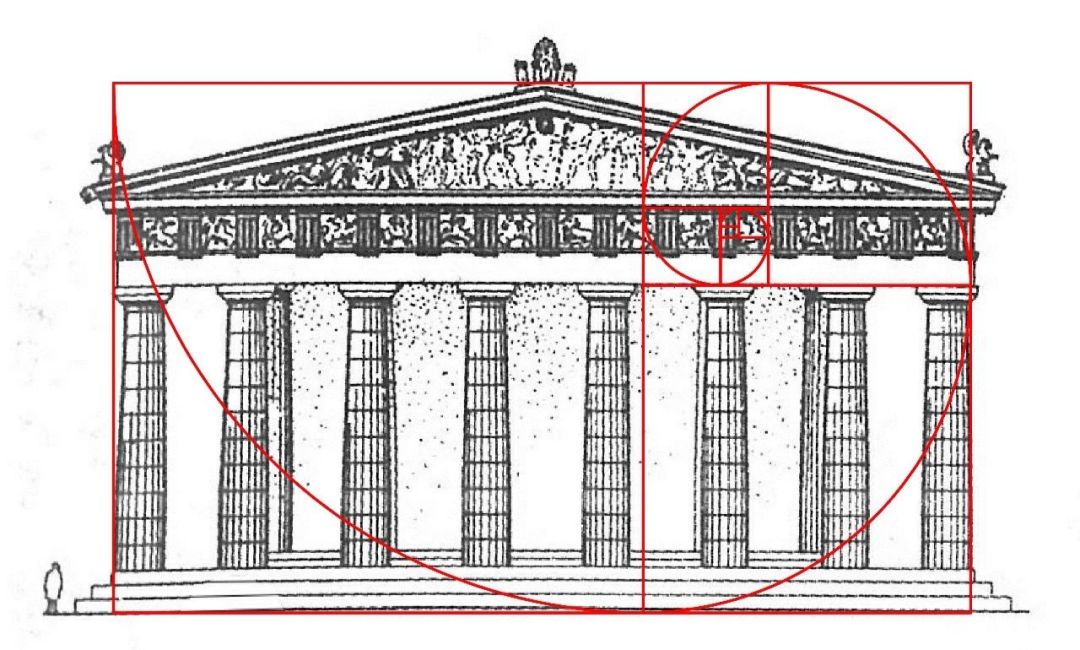
Parthenon, Golden line

FoguangsiFrontvie, 1:√2
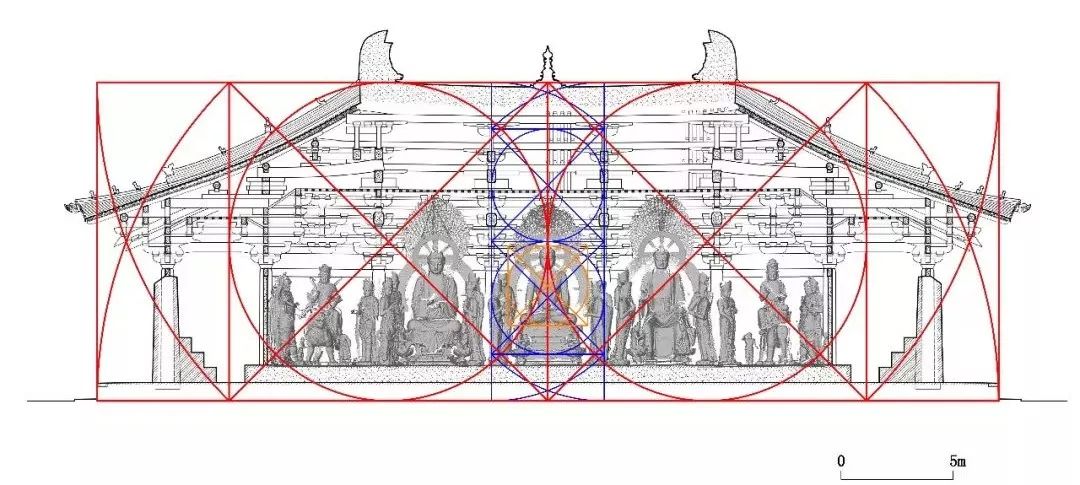
FoguangsiFrontvie, 1:√2

DulesiFrontvie, 1:√2
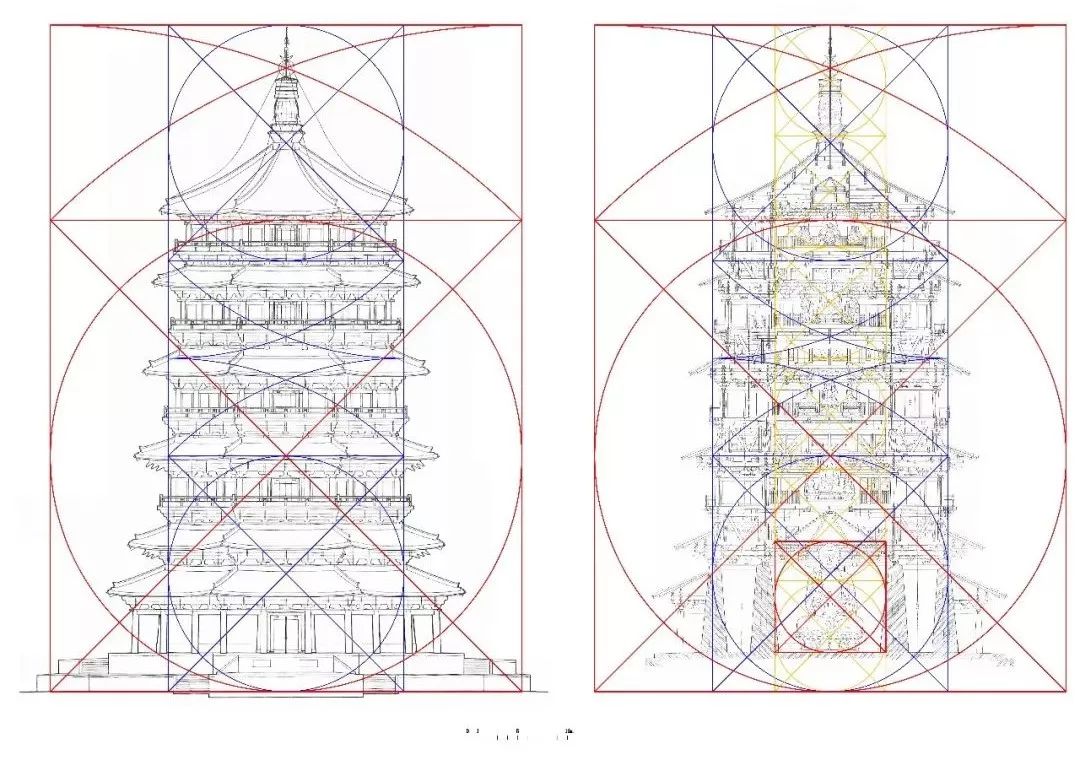
YingxianmutaFrontvie, 1:√2
Aesthetic measure
In this book Professor George David Birkhoff presents his notable quantitative approach to various aesthetic fields—polygonal forms, ornaments and tilings, vases, harmony, melody, and the musical quality in poetry. His fundamental thesis is that the aesthetic measure depends upon the density of the elements of order in the aesthetic object. A psychological justification of the thesis is made at the outset, and in a later chapter is shown to be a natural outgrowth of earlier theories. The many illustrations, four of them in color, have been carefully chosen and will prove of much interest in themselves. The novelty and the systematic character of Professor Birkhoff’s theory will attract the attention of every student of the Fine Arts or aesthetics.
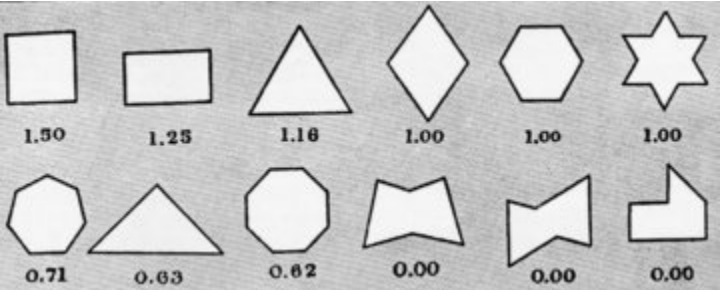
Measure result of Polygons
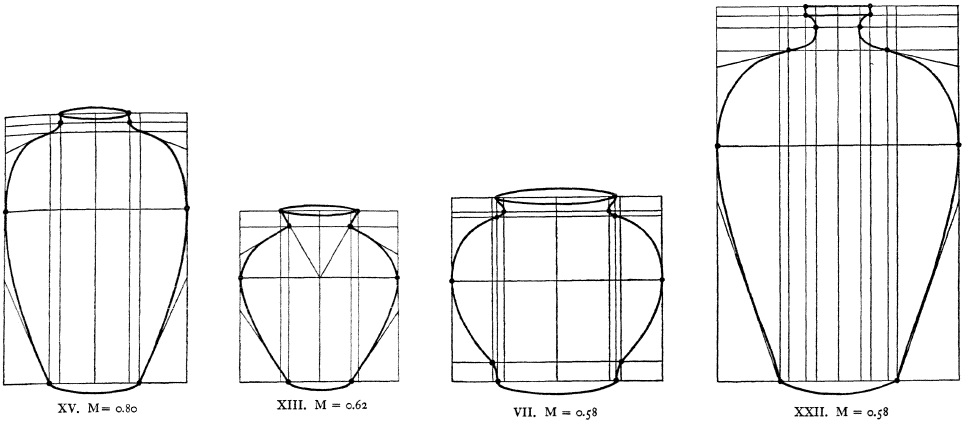
Measure result of vase

Measure result of art works
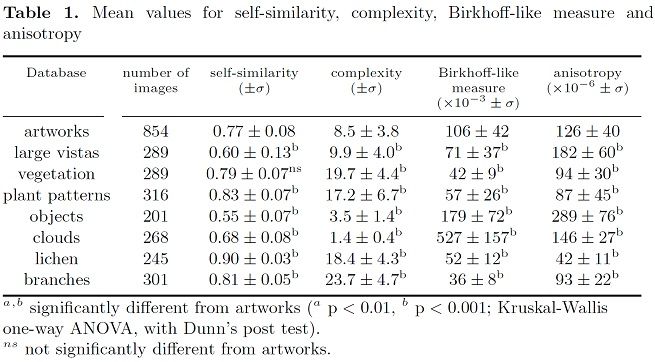
Measure result of different categories of things
Chladni Figures
These wonderful diagrams are to be found in Entdeckungen über die Theorie des Klanges (Discoveries in the Theory of Sound), a late 18th-century work by German physicist and musician Ernst Chladni (1756–1827), in which he details his experiments — for which he is sometimes labelled the “father of acoustics” — with vibrating plates and nodal patterns. More than a century earlier the English scientist Robert Hooke had run a violin bow along the edge of a flour-covered glass plate and observed strange patterns forming. These patterns were caused by “nodal lines”, the still areas of an otherwise vibrating plate. Chladni perfected these initial experiments by Hooke (using mostly sand this time) and introduced them systematically in his 1787 book, providing a significant contribution to the understanding of acoustic phenomena and how musical instruments functioned. Such patterns are now commonly termed “Chladni figures”.
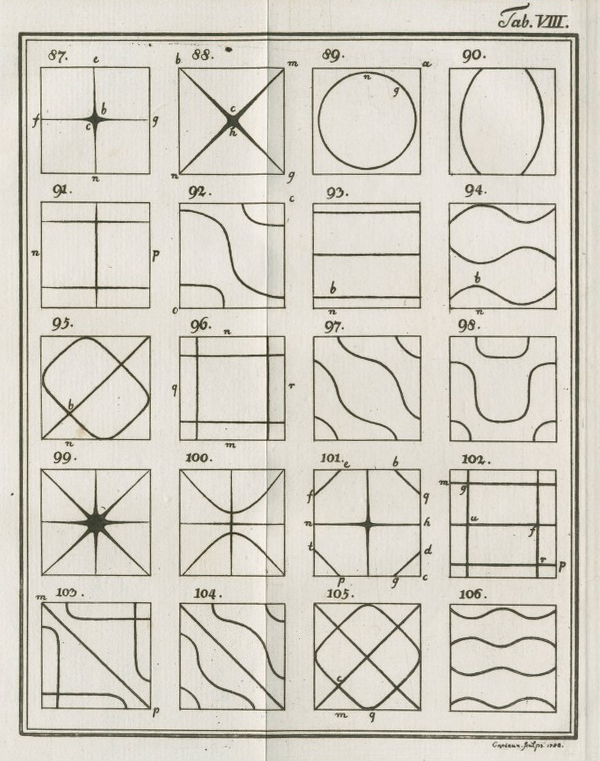

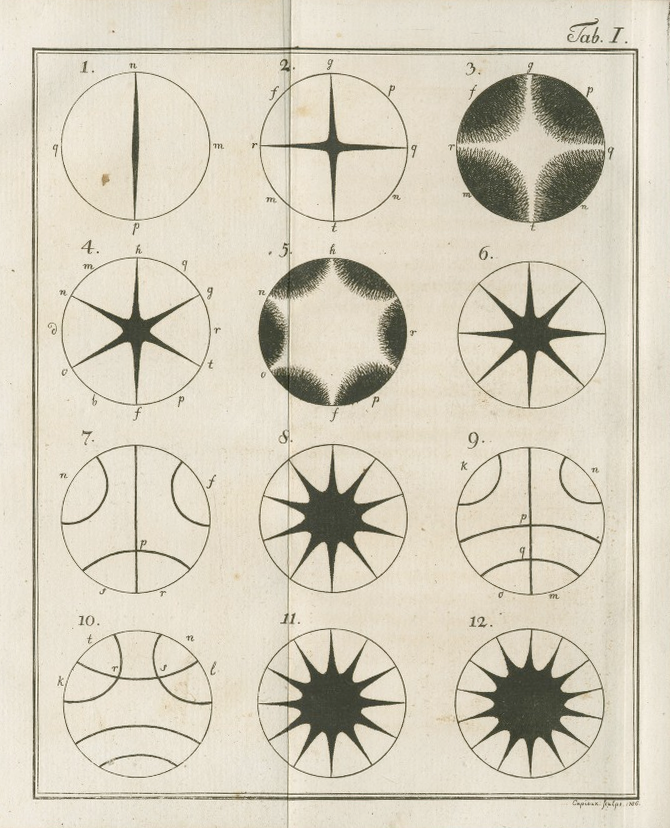
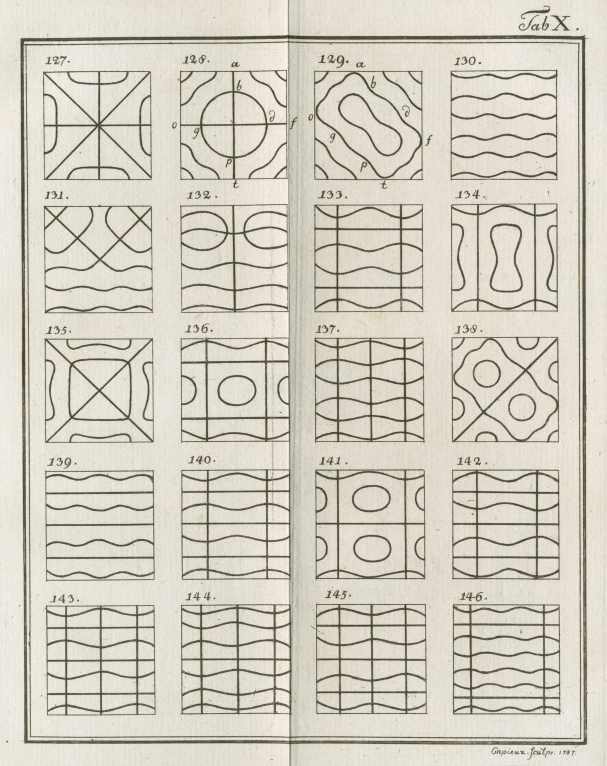

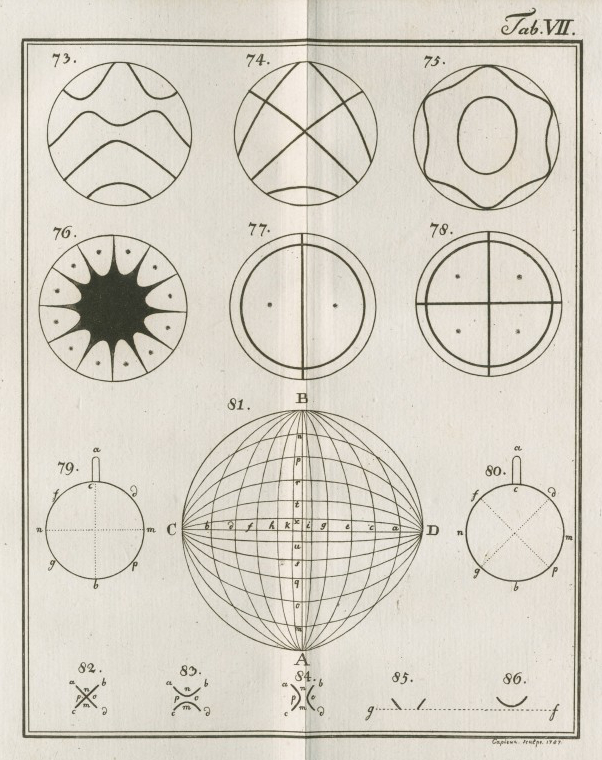

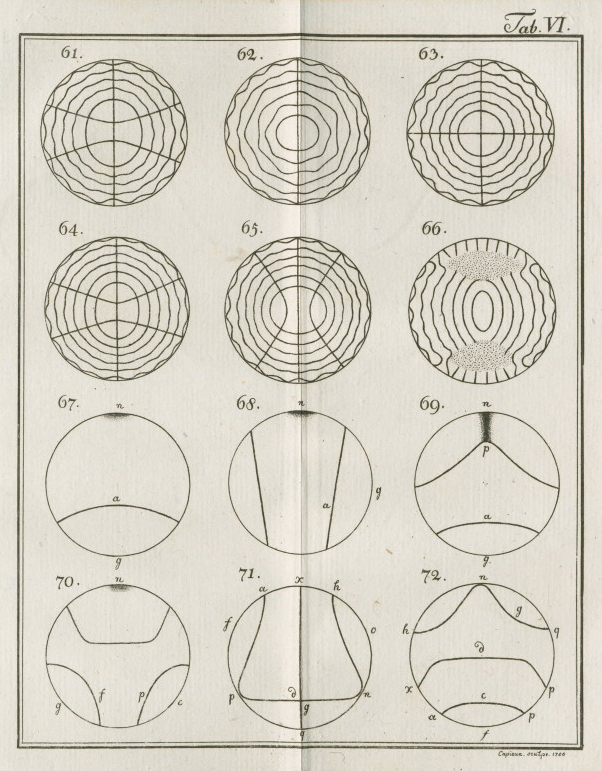

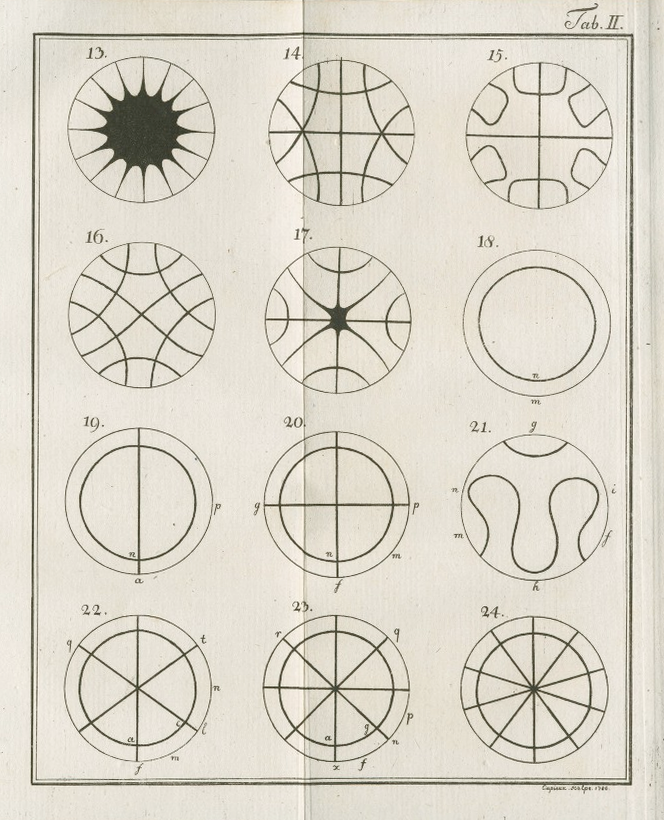
Recognition-By-Components theory
The recognition-by-components theory, or RBC theory, is a bottom-up process proposed by Irving Biederman in 1987 to explain object recognition. According to RBC theory, we are able to recognize objects by separating them into geons (the object's main component parts).
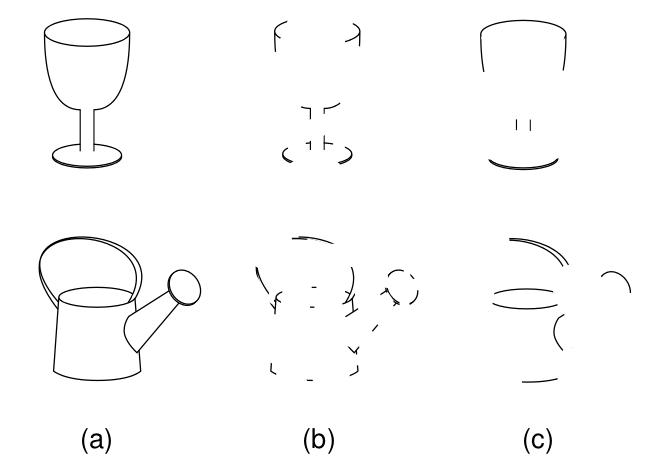
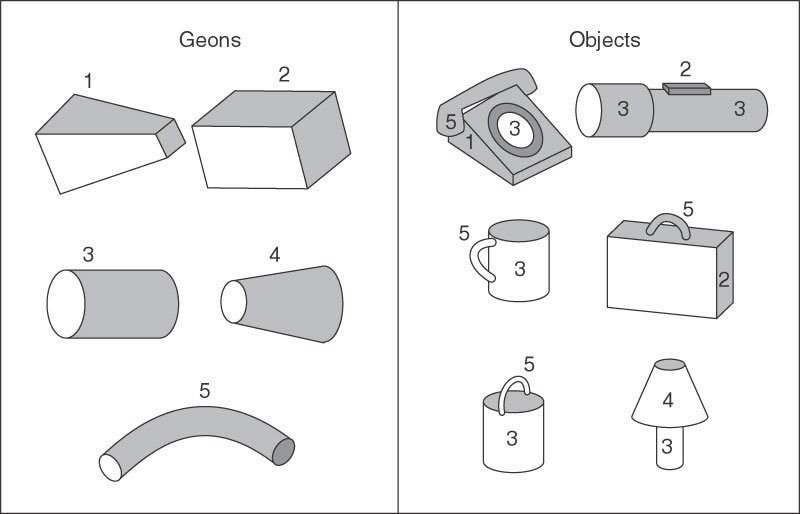

Is DNA expression generative art?
Dr. Nikolaus Bezruczko
This paper presents an alternative, less mysterious, view asserting that much Western art includes primitive structures originating in human DNA. Creative imagination and introspection certainly have a central role in human creativity, but artistic production is also saturated with special insights derived from subtle genetic influences. In other words, gene regulation during visual art making underlies much more history of Western arts than is commonly understood. The creative processes of imagination from this perspective are to an important extent generated by DNA coding. Likewise, originality of art making is recognized as intertwined with evolution and natural selection. Therefore, a goal of this commentary is to address the title, Is DNA expression generative Art?”
At first blush, the assertion of UIs in visual arts at any level of human development seems unlikely. What possible function could they fulfil during human evolution? How would they differ from other conceptual entities? How could these images be transmitted across generations? Yet, a central fact is art depends on a cultural environment in which art makers exercise their talents over time. This issue becomes especially relevant if artists extract patterns and images from experience over millions of years. Any contributions of art making to human survival or fitness could be preserved in DNA, which gives new meaning to Jung’s idea of collective unconscious.




The Infinity of Lists
Best-selling author and philosopher Umberto Eco is currently resident at the Louvre, and his chosen theme of study is "the vertigo of lists." Reflecting on this enormous trove of human achievements, in his lyrical intellectual style he has embarked on an investigation of the phenomenon of cataloging and collecting. This book, featuring lavish reproductions of artworks from the Louvre and other world-famous collections, is a philosophical and artistic sequel to Eco’s recent acclaimed books, History of Beauty and On Ugliness, books in which he delved into the psychology, philosophy, history, and art of human forms. Eco is a modern-day Diderot, and here he examines the Western mind’s predilection for list-making and the encyclopedic. His central thesis is that in Western culture a passion for accumulation is recurring: lists of saints, catalogues of plants, collections of art. This impulse has recurred through the ages from music to literature to art.
A list can be composed of
Words
Images
Forms
Places
Things
Lists
Miracles
Collections and treasures
Characteristics of things
Their essences
An excess of things
A chaotic mess of things
An infinity
If on a winter's night a traveler
If on a winter's night a traveler (Italian: Se una notte d'inverno un viaggiatore) is a 1979 novel by the Italian writer Italo Calvino. The postmodernist narrative, in the form of a frame story, is about the reader trying to read a book called If on a winter's night a traveler. Each chapter is divided into two sections. The first section of each chapter is in second person, and describes the process the reader goes through to attempt to read the next chapter of the book he or she is reading. The second half is the first part of a new book that the reader ("you") finds. The second half is always about something different from the previous ones and the ending is never explained. The book was published in an English translation by William Weaver in 1981.
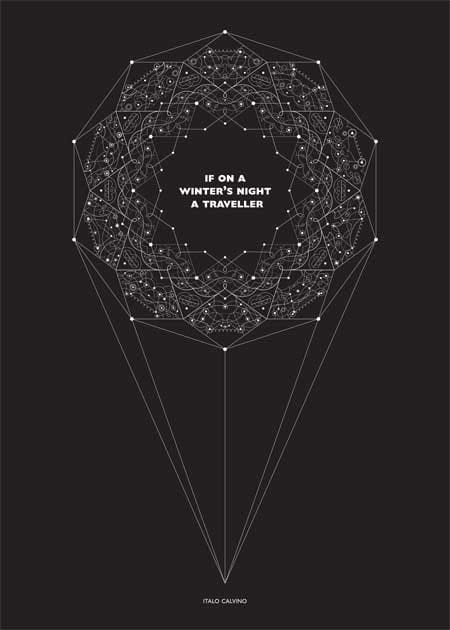
The garden of forking path
"The Garden of Forking Paths" (original Spanish title: "El jardín de senderos que se bifurcan") is a 1941 short story by Argentine writer and poet Jorge Luis Borges. It is the title story in the collection El jardín de senderos que se bifurcan (1941), which was republished in its entirety in Ficciones (Fictions) in 1944. It was the first of Borges's works to be translated into English by Anthony Boucher when it appeared in Ellery Queen's Mystery Magazine in August 1948.
The story's theme has been said to foreshadow the many worlds interpretation of quantum mechanics.It may have been inspired by work of the philosopher and science fiction author Olaf Stapledon.
Borges's vision of "forking paths" has been cited as inspiration by numerous new media scholars, in particular within the field of hypertext fiction. Other stories by Borges that express the idea of infinite texts include "The Library of Babel" and "The Book of Sand".
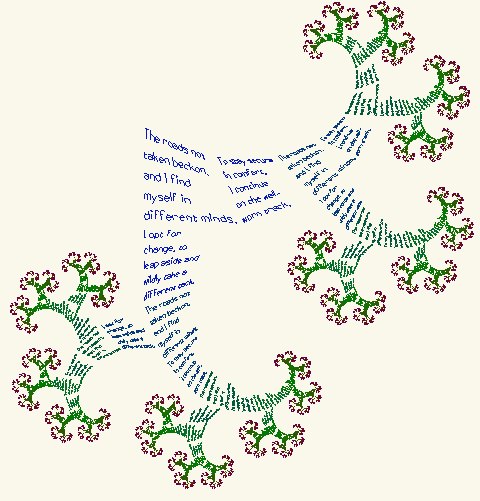
Library of babel
"The Library of Babel" (Spanish: La biblioteca de Babel) is a short story by Argentine author and librarian Jorge Luis Borges (1899–1986), conceiving of a universe in the form of a vast library containing all possible 410-page books of a certain format and character set.
The story was originally published in Spanish in Borges' 1941 collection of stories El Jardín de senderos que se bifurcan (The Garden of Forking Paths). That entire book was, in turn, included within his much-reprinted Ficciones (1944). Two English-language translations appeared approximately simultaneously in 1962, one by James E. Irby in a diverse collection of Borges's works titled Labyrinths and the other by Anthony Kerrigan as part of a collaborative translation of the entirety of Ficciones.


Babel Image Archives
The Babel Image Archives are an application of the principle underlying Jorge Luis Borges' “The Library Of Babel” to the visual world. Borges' short story, the inspiration for libraryofbabel.info, describes a universal library containing every possible permutation of 410 pages of letters, thus everything that ever has been or ever could be written. Instead of letters and punctuation marks, the Image Archives permute the 4096 colors, and rather than a page of 40 lines each with 80 characters, the images are pixel grids with 416 rows and 640 columns. It contains every image that ever has been or could be created with this color palette in these dimensions, including portraits of every person who ever lived at every moment in their life, digitized versions of every work of art ever created, even those lost to history, as well as every work of art which ever could be created, and photographs of your own birth, wedding, and funeral. It contains 4096266240 (~10961755) unique images.

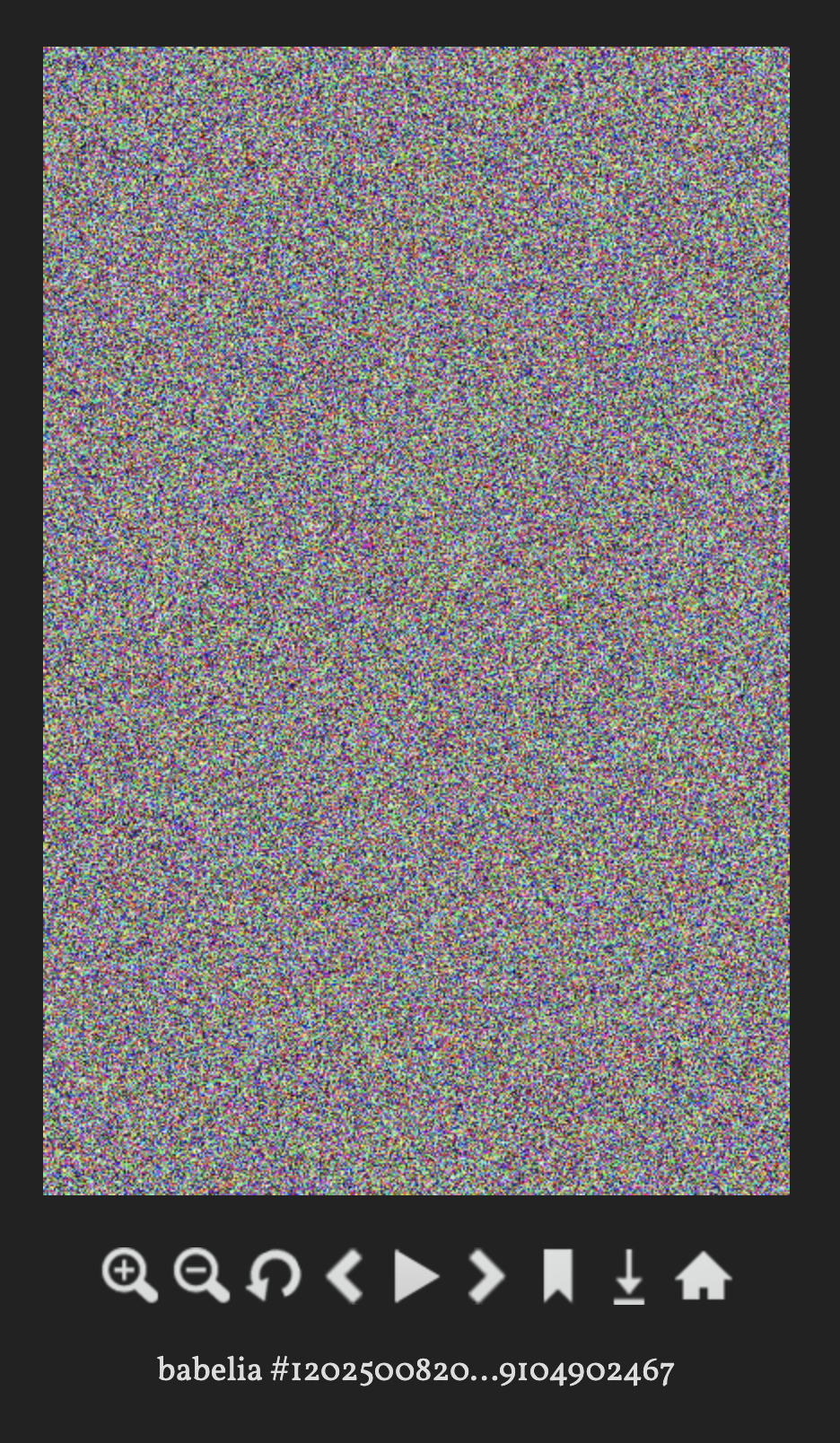
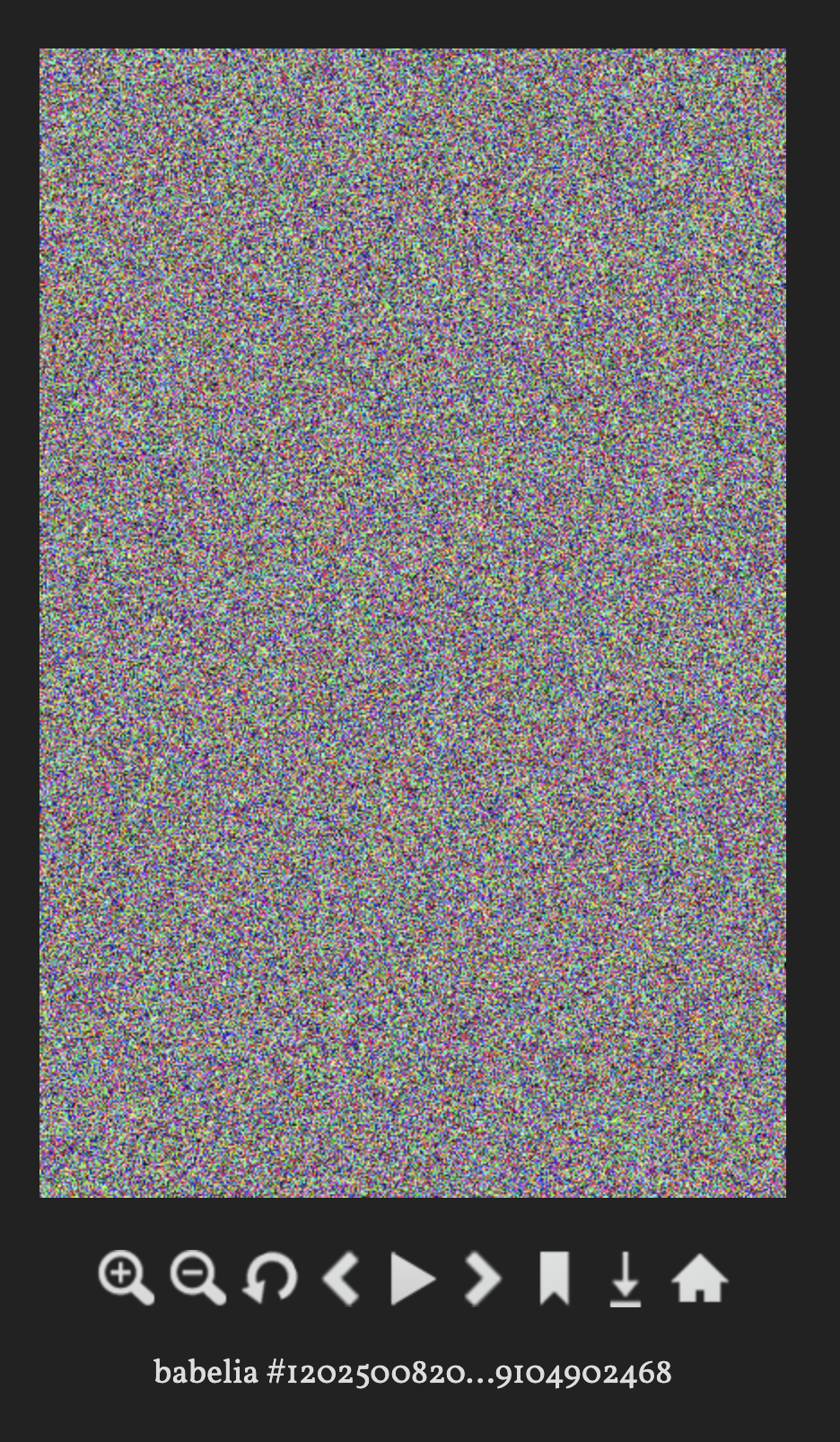
Language is Image, Paper, Code, & Cloth
Francesca Capone : Weaving Language II — Book Signing
Weaving Language II examines the poetics of weaving traditions through historical research as well as contemporary practices. Attempting to dismantle and rebuild commonplace understandings of the history of writing, Weaving Language focuses on fiber-based forms as a longstanding but often overlooked medium for record keeping, storytelling, and poetry. The second book in a three book series, WLII: Language is Image, Paper, Code, & Cloth, is both a mapping of instances that exemplify textile poetics from the beginning of time to the present day, as well as a creative experiment in utilizing textile as code. Capone invites the reader to experience textile as something to be read, along with it’s tactile and visual functions.
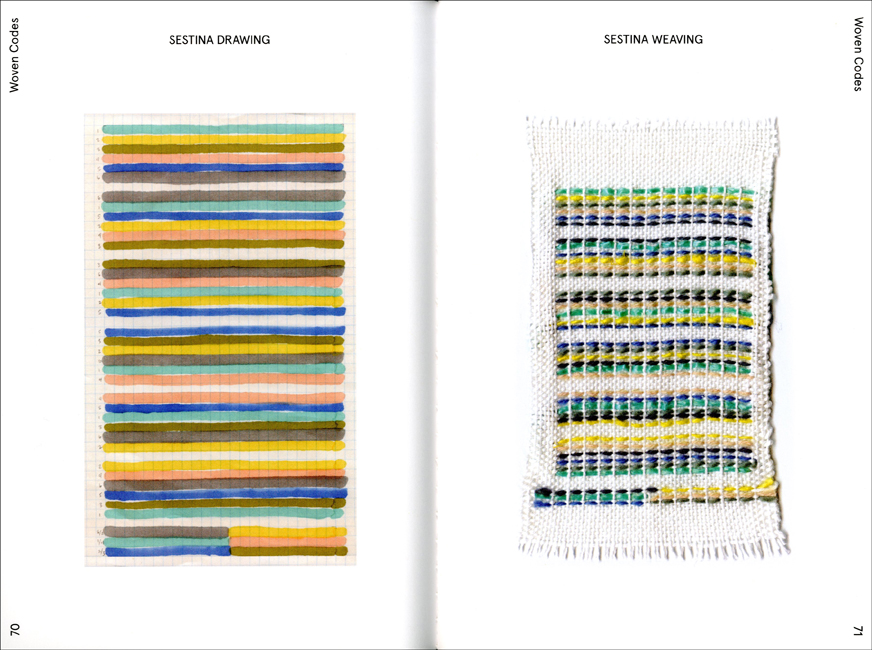

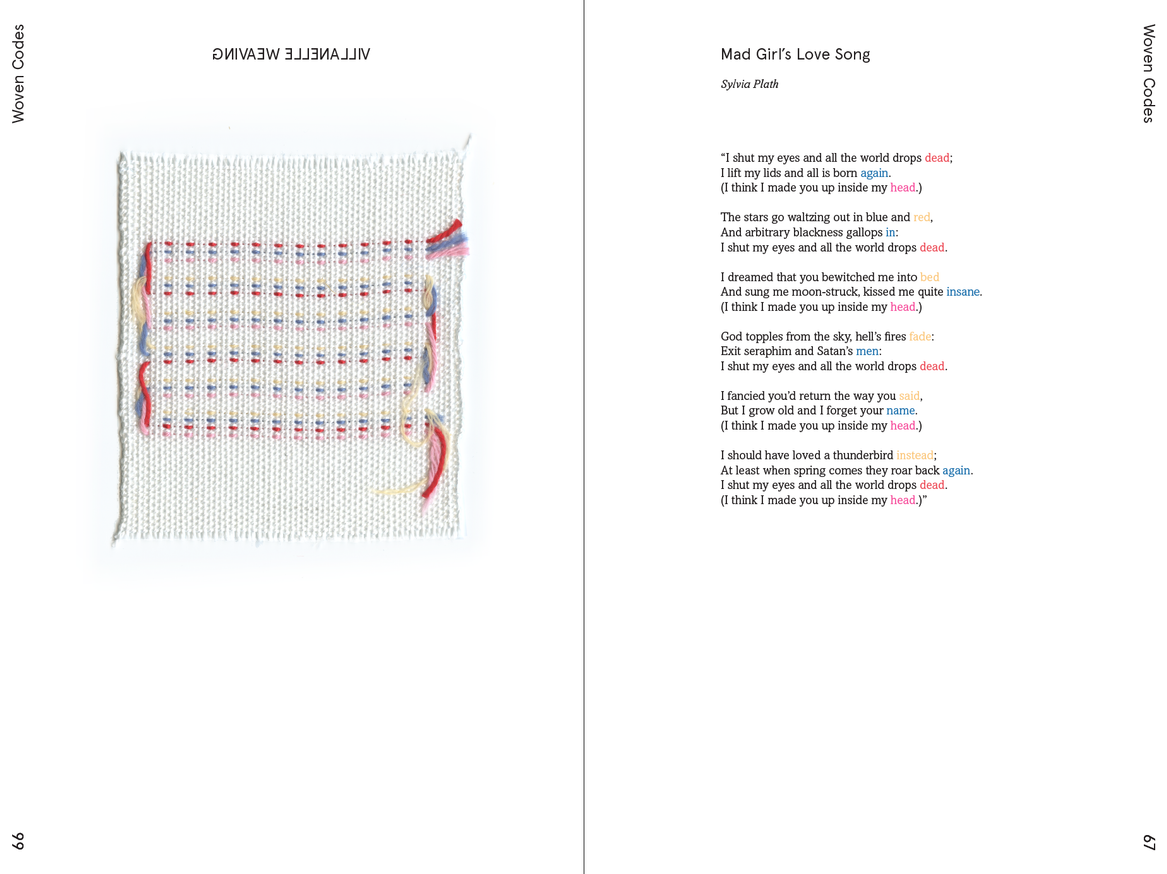


Typology-architecture
Typology (in urban planning and architecture) is the taxonomic classification of (usually physical) characteristics commonly found in buildings and urban places, according to their association with different categories, such as intensity of development (from natural or rural to highly urban), degrees of formality, and school of thought (for example, modernist or traditional). Individual characteristics form patterns. Patterns relate elements hierarchically across physical scales (from small details to large systems).




Generative Art language
Enrica Colabella
A sense of the mystery of the world seized Cézannetoward a depth never expressed by another artist. He saw that nothing exists in isolation: an obvious insight, yet one that only he could make us see. He performed each artwork as an expression of a generative process, where precedents give ideas and indications for the new results, defining a visionary poetics following the great artists of the past, especially Piero della Francesca.



Topology optimization
Topology optimization (TO) is a mathematical method that optimizes material layout within a given design space, for a given set of loads, boundary conditions and constraints with the goal of maximizing the performance of the system. TO is different from shape optimization and sizing optimization in the sense that the design can attain any shape within the design space, instead of dealing with predefined configurations.
